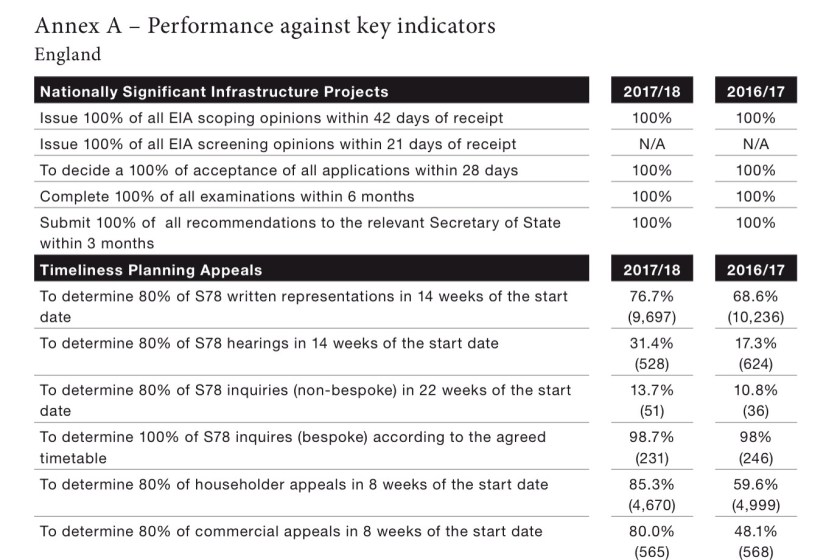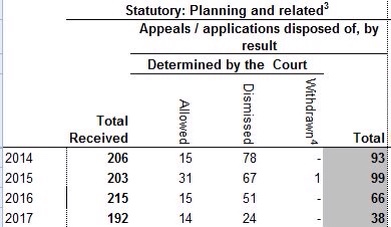My 14 April 2018 blog post Telephone Kiosks v Homes commented on the rash of prior approval applications for “telephone kiosks” under Part 16 Class A of Schedule 2 of the Town and Country Planning (General Permitted Development) (England) Order 2015. I queried in passing as to whether some of these applications met the test in the General Permitted Development Order that the development should be for the purpose of the electronic communications code operator’s electronic communications network. I didn’t know at the time that a more basic (and surely from the operator’s perspective entirely avoidable) dispute was under way between one operator and the Planning Inspectorate.
The background to Maximus Networks Limited v Secretary of State (Dove J, 25 July 2018) was that Maximus had lodged around 390 appeals in situations where either the relevant local planning authority had not determined a prior approval application within the statutory period or had decided not treat the application as valid. The London Borough of Hammersmith and Fulham had declined to validate the applications on the basis that Maximus had, in submitting their applications, not met the statutory requirement to provide evidence that notice had been served on the relevant land owner (which in every case was either the London Borough of Hammersmith and Fulham or Transport for London). Maximus “contended that since the land the subject of the application was in the ownership of the highway authority who were also the local planning authority there was no need for compliance with this condition.” The Planning Inspectorate refused to validate the appeals.
Maximus took the position that whilst it is unlawful for a local planning authority to accept an application which does not meet the statutory validation requirements (section 327A of the Town and Country Planning Act 1990) the position is different on appeal, in that the Secretary of State is not constrained by section 327A and, pursuant to section 79 of the 1990 Act, “may deal with the application as if it had been made to him in the first instance” and therefore has a discretion to waive any procedural irregularity. By the time of the court hearing before Dove J, issues had been resolved in all save 53 appeals.
Maximus relied on three grounds of challenge:
1. PINS had wrongly approached the appeals on the basis that they did not have a discretion to treat them as validly made.
2. “even if PINS did, in reality, recognise that there was a discretion which had to be exercised as a consequence of the legislative framework and authorities which are set out below, the discretion was in fact exercised irrationally.”
3. In the event that the court were to find that the appeals were not validly made, Maximus was entitled to refund of the application fees that it had paid to the local planning authorities.
Dove J accepted that PINs did have a discretion to treat the appeals as valid:
“...section 79 of the 1990 Act provides the defendant with a discretion to exercise as to whether or not to accept an appeal even if it is found to be wanting in relation to any procedural aspect. This discretion arises both under section 79(1) which contains a wide discretion for the Secretary of State to allow or dismiss an appeal, reverse or vary the local planning authority’s decision or any part of it, and deal with the application as if made to the defendant in the first instance. A discretion also arises under section 79(6) which provides that the defendant has a discretion to decline to determine an appeal or proceed with its determination if it emerges during the course of the appeal’s determination that the local planning authority could not have granted planning permission…”
However, he considered that PINS had indeed exercised its discretion:
“It needs to be borne in mind that this was an administrative decision and thus an overly forensic scrutiny of its terms would be inappropriate. It is particularly pertinent in my judgment that, without being a detailed legal treatise, the decision sets out the nature of the statutory discretion set out in section 79 and summarises the decision of the Court of Appeal in Bath v North East Somerset. I am unable to accept that what follows in terms of PINS’ decision involves a complete negation of the exercise of discretion under section 79. The decision goes on to note the view that had been formed that there had been a failure to comply with the formal requirements in relation to notice under part 16 of schedule 2 of the GPDO and in my judgment that is not evidence of PINS assuming that they only have power to conclude that there was no jurisdiction to entertain appeals, but rather explaining their justification for concluding in applying section 79 of the 1990 Act that the applications have not been valid and therefore the appeals should not be entertained.
In my judgment a fair reading of the decision leads to the conclusion that it is a concise analysis of the basis upon which PINS were declining to accept jurisdiction in respect of the appeals, rather than an assertion that PINS had no power at all to do anything other than refuse to accept the appeals. ”
Dove J accepted that PINS had exercised its discretion rationally in determining that a local authority could be prejudiced in circumstances where it was not served with notice of the making of an application in its capacity as landowning highways authority:
“A local authority as a land owner may have very different interests and concerns to take account of in exercising its powers to own and control land. It cannot be assumed that when an application of this kind is made to a local planning authority that the element of the local authority exercising its planning functions will automatically or of necessity consult that part of the council concerned with protecting its interests as a land owner or automatically be aware of all matters which the department responsible for safeguarding the council’s interests as land owner would wish to draw to their attention. Certainly that assumption is not contained within the statutory framework which, uncontroversially, by implication provides for the separate notification of the land owner when it is a local authority as part and parcel of the formalities for the application itself. […] It is a wholly unproved hypothesis that simply because the local planning authority is part of the same organisation as the affected landowner no prejudice from failing to notify the land owner could conceivably arise. It may be that the local authority as land owner would have different concerns and observations to draw to the attention of the local planning authority exercising its development control functions. I am unable to accept therefore that this observation in the pre-action protocol letter betrays circular reasoning or an irrational approach. ”
So, PINS was perfectly entitled to turn the appeals away. However, there was a sting in the tale for the authorities; Dove J accepted that the application fees paid were as a result refundable:
“In my view where, as here, the defendant concludes that an appeal is to be rejected on the basis that application is invalid (and he declines to exercise his discretion under section 79 to nonetheless continue to consider the appeal) then that is in effect a conclusion that the application was and should have been rejected as invalid and therefore falls within the scope of regulation 14(3) of the 2012 Regulations. It follows the claimant’s case in relation to Ground 3 should succeed, leading to a declaration that in respect of those applications made to the first interested party they are entitled to have their fees refunded.”
As mentioned, an avoidable dispute, but an interesting reminder of the slightly different approach to validation requirements that applies on appeal. And something other to write about than the NPPF.
Simon Ricketts, 29 July 2018
Personal views, et cetera











